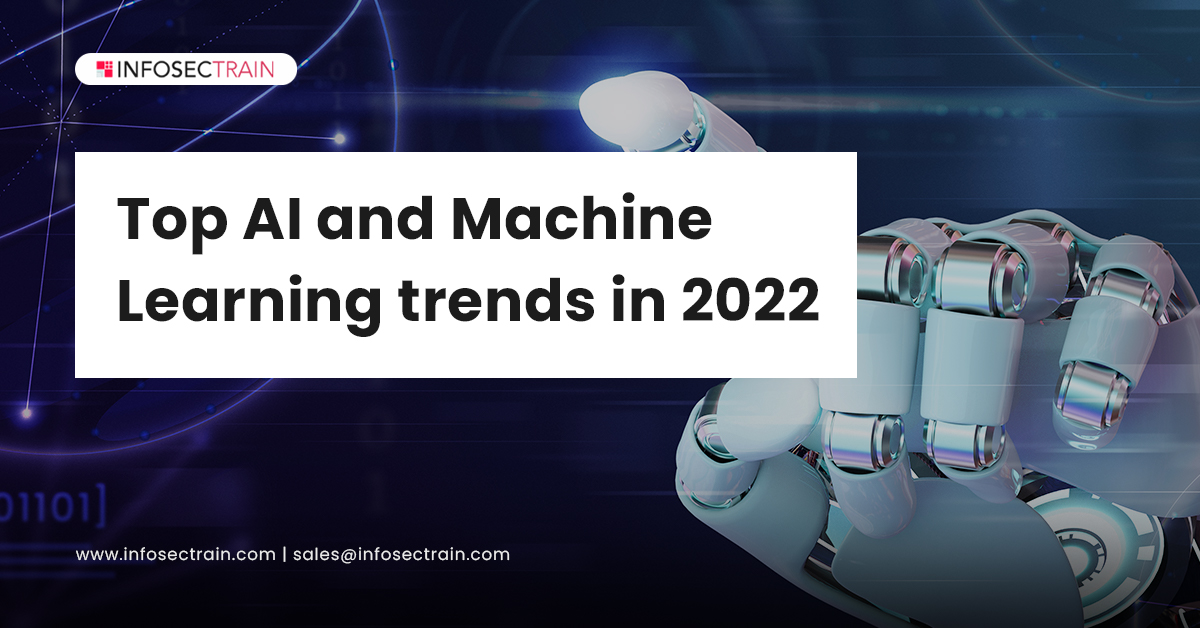The Popular Artificial Intelligence and Machine Learning Trends of 2022
Artificial Intelligence and its subset, Machine Learning, are two crucial technologies that have the capability to change our lives. According to a few big brains in the world, AI will change our lifestyle and overhaul many industries like education, healthcare, and manufacturing.

Artificial Intelligence (A.I.) is a problem-solving procedure for humans that has been simplified. It allows the software to accomplish tasks without having to be designed directly. Neural networks and deep learning are also included. It’s a wider concept of machines being able to execute jobs in the same way that humans do.
On the other hand, Machine Learning is an application of Artificial Intelligence (AI) that lets machines access data and learn how to do jobs. It employs algorithms to enable systems to discover hidden insights without having to be coded.
The Significance of Artificial Intelligence and Machine Learning
Due to the increasing amounts and types of data available, computer processing is becoming increasingly important in order to deliver deep-rooted knowledge that is both inexpensive and accessible. It is possible to automate models that can evaluate more complex data and produce more accurate and timely results using A.I. and Machine Learning.
Organizations recognize valuable business possibilities by establishing exact models to prevent unforeseen hazards. The use of algorithms to create a model is assisting businesses in bridging the gap between their goods and their users by allowing them to make better decisions with less human interaction. The value of Machine Learning has been recognized by most sectors with large amounts of data. Organizations have grown more proficient in their workflow and gained an advantage over competitors by collecting insights from this data, frequently in real-time.
Artificial Intelligence and Machine Learning Trends in the year 2022
Natural Language Processing
NLP is one of the most widely utilized AI technologies nowadays. As robots begin to understand human languages, we can now just converse with them; this technology dramatically lowers the need for inputting or communicating with a screen. Furthermore, AI-enabled gadgets can now convert real human languages into computer codes that may be used to run applications and programs.
GPT-3 marks a significant step forward in language processing. It has roughly 175 billion “parameters,” which are data points and variables that robots use to process language. GPT-4, a more powerful successor to GPT-3, is currently being developed by OpenAI. GPT-4 could have 100 trillion parameters, making it 500 times greater than GPT-3.
Augmented hyper-automation of AI and ML
Hyper Automation means taking automation to the next level. Hyper Automation not only automates complex operations but also assists businesses and organizations in identifying procedures that can be automated. To do so, it employs AI, machine learning, and (RPA) Robotic Process Automation.
As 2022 approaches, hyper-automation will become an increasingly prominent tool for industries and organizations. A significant number of sectors have already been affected by the recent pandemic, which demonstrates the need for increased automation. Additionally, as more developments in the field of hyper-automation take place, 2022 will prove to be a significant year to examine the accomplishments and predict what the future of hyper-automation may hold.
Improved cybersecurity
The World Economic Forum recently said that cybercrime is a greater danger to society than terrorist attacks. Cybercrime is becoming rampant, and cybersecurity solutions are becoming sophisticated as more intelligent but complex robots connected to a large network gain control of every aspect of our lives.
AI and machine learning tools have the potential to help solve this problem. For example, AI/ML algorithms can scan greater network traffic and spot patterns of illicit virtual activity. This will likely be the site of some of the most important AI/ML technology advances in 2022.
The Internet of Things with AI and ML
The Internet of Things (IoT) refers to the millions of internet-connected devices that are constantly exchanging data over the internet. IoT devices have a wide spectrum of range from smart TVs to pretty advanced robots that are connected to the internet. In 2022, the Internet of Things is expected to be a distinguishing technology. Experts believe that as AI developments enrich IoT devices, their ability to interpret, transport, and communicate complicated data will improve by huge strides.
Quantum AI (Quantum Artificial Intelligence)
Modern enterprises will soon be able to use AI-powered by quantum computing to address complicated business challenges faster than classical AI. Quantum AI makes data analysis and pattern prediction faster and more accurate. As a result, it aids various firms in recognizing unanticipated issues and developing effective solutions. Consequently, quantum AI will transform a wide range of industries, including chemistry, healthcare, and finance.
Final words
All of these AI and machine learning technologies will eventually impact enterprises all over the world. These disruptive technologies have the potential to transform every industry by helping organizations accomplish their business goals, make critical decisions, and generate creative goods and services.
By 2027, the AI/ML sector is predicted to increase at a CAGR of 33%. According to estimates, by 2022, firms will have implemented at least 35 AI initiatives in their operations.
Data Specialists, CIOs, Data Analysts, and CTOs, should consider taking advantage of these opportunities to extend their current business capabilities and leverage these technologies.
If you want to understand more about Artificial Intelligence and Machine Learning, do check out the InfosecTrain website.







 1800-843-7890 (India)
1800-843-7890 (India)